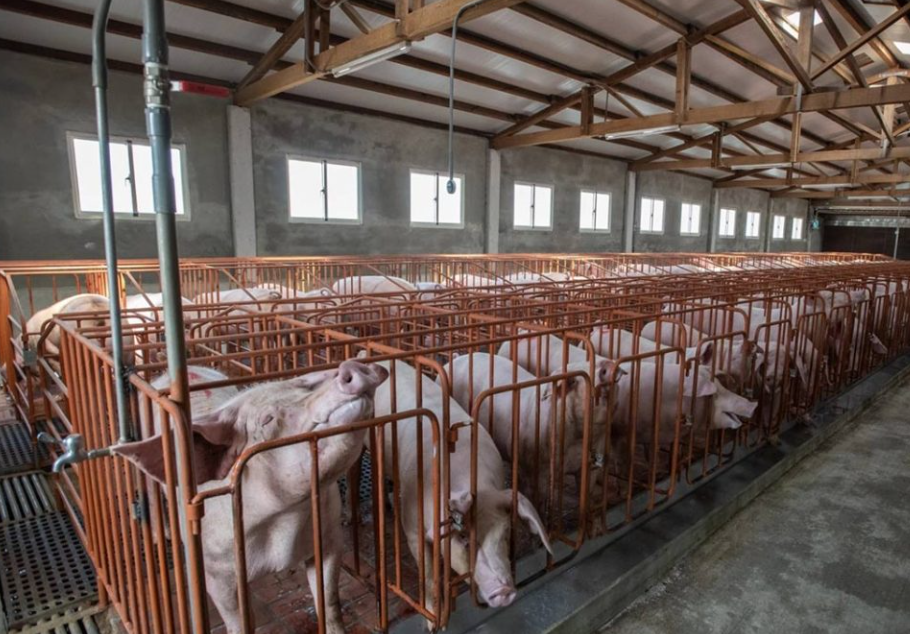Revolutionizing Swine Production: Smart LED Lighting Solutions for Enhanced Pig Welfare and Farm Efficiency
Revolutionizing Swine Production: Smart LED Lighting Solutions for Enhanced Pig Welfare and Farm Efficiency

Directory:
1. The Science Behind Pig Vision and Light Requirements
2. The Limitations of Conventional Lighting in Pig Farms
3. LED Technology Advantages for Pig Farm
4. Pig Lighting Solution
5. Implementation Considerations
Modern pig farming faces increasing demands for efficiency and animal welfare, where lighting plays a pivotal role in regulating growth, reproduction, and health. Traditional lighting systems, such as incandescent or fluorescent lamps, often fail to meet the spectral and energy efficiency requirements of contemporary livestock management. This article explores how LED technology—with its tunable spectra, energy efficiency, and smart controls—offers a transformative approach to pig farm lighting. Drawing on industry standards and biological insights, we present tailored solutions for different growth stages, from gestation to fattening, demonstrating how optimized illumination can boost productivity while prioritizing animal well-being.
1. The Science Behind Pig Vision and Light Requirements
Pigs possess dichromatic vision, primarily sensitive to blue-green wavelengths (450-500nm), with visual acuity approximately 10% of humans. Their circadian rhythms and behaviors - including feeding, resting, and reproductive cycles - are profoundly influenced by light intensity, duration, and spectrum.
2. The Limitations of Conventional Lighting in Pig Farms
High energy consumption, short lifespan, and fixed spectra of traditional lamps.
Impacts of poor lighting on pig stress levels, reproductive cycles, and growth rates.
3. LED Technology Advantages for Pig Farm
Modern LED systems provide transformative benefits:
Spectral Precision
Tunable blue-green spectra matching porcine visual sensitivity
Red light options (620-750nm) for nighttime farrowing house illumination
Energy Efficiency
60-70% energy savings versus fluorescent systems
50,000+ hour lifespan reduces maintenance costs
Smart Control Capabilities
Automated photoperiod adjustment via IoT systems
Real-time intensity modulation based on animal activity
4. Pig Lighting Solution
Gestation & Breeding: Higher intensity (150–250 lux) and extended photoperiods (14–16 hours) to stimulate reproductive activity.
Farrowing: Red-spectrum lighting at night to minimize disruptions for sows and piglets.
Nursery: Uniform illumination (100 lux) to reduce aggression and promote weight gain.
Fattening: Lower intensity (50 lux) and shorter cycles to optimize feed conversion ratios.
Table 1 Chinese standard GB/T 17824.3—2008 specifies the requirements of natural light and artificial lighting for pig houses

Table 2 The American Society for Agricultural Bioengineering

Table 3 The Service Canada Program recommends

5. Implementation Considerations
Fixture Selection: IP65-rated waterproof LED luminaires with 110° beam angles
Layout Optimization: 3-4m spacing at 2.4m mounting height for uniform coverage
Control Systems: Programmable controllers with dimming and scheduling functions
LED lighting solutions are redefining modern pig farming by aligning technical innovation with biological needs. By adopting stage-specific, data-driven illumination strategies, farmers can achieve significant improvements in productivity, animal welfare, and operational sustainability. As the industry moves toward precision livestock farming, LED technology will remain a cornerstone of efficient and ethical agricultural practices.
6. Related Product

7. FAQ
Q: Why choose LED lighting for pig farms?
A: LEDs save 50-70% energy, last 50,000+ hours, and optimize pig health with customizable spectra.
Q: What's the ideal light intensity for growing pigs?
A: 50 lux for 8-12 hours daily reduces stress while maintaining growth.
Q: How does lighting affect sow reproduction?
A: 200+ lux for 14-16 hours stimulates estrus and improves farrowing rates.
Q: Why use red light at night?
A: Red light minimizes disruptions to sows/piglets while allowing caretaker visibility.
Q: What IP rating do pig farm LEDs need?
A: IP65 (dustproof/waterproof) or higher to withstand washdowns and humidity.
Q: How long do LED fixtures last in barns?
A: 5+ years (50,000-100,000 hours) with proper maintenance.
Q: Can LEDs reduce pig aggression?
Yes, uniform 100-150 lux lighting decreases tail-biting by 30-40%.
Q: What color temperature works best?
A: 4000-5000K mimics daylight; 3000K for nighttime calmness.
Q: Do LEDs require special wiring?
A: No, they work with existing systems but benefit from smart controls.
Q: How quickly do LEDs pay for themselves?
A: 2-3 years via energy/maintenance savings and productivity gains.
